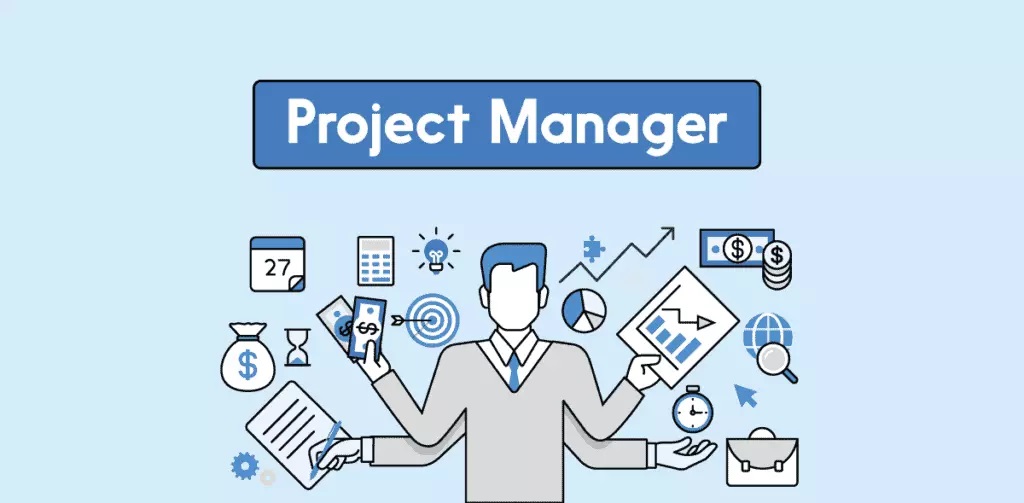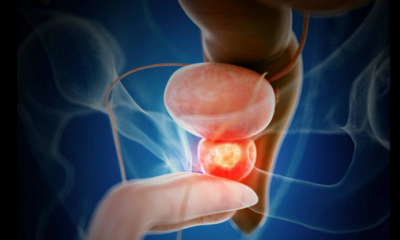The stomach plays a crucial role in the digestion and storage of food, making it vital for our overall well-being. As food passes through the esophageal sphincter and reaches the stomach, it encounters caustic secretions and chemicals that aid in the digestion process. Given the stomach’s delicate nature, it is essential to take steps to protect its health.....Read Full Article>>
Certain beverages can contribute to stomach cleansing and toxin elimination in their own unique ways. Here are some examples:
1. Ginger tea:
Ginger tea has been associated with various health benefits, including alleviating symptoms of PMS and motion sickness. Regular consumption of ginger tea may aid in toxin
elimination from the digestive tract. Ginger contains natural compounds that can help counteract the effects of certain toxins.
2. Moringa leaf tea:
Drinking tea made from moringa leaves can assist in cleaning the digestive tract. It has shown potential benefits in treating gastrointestinal conditions such as gastritis and ulcerative colitis. The high content of vitamin B complex compounds in moringa aids in digestion, while its antibacterial and healing properties help combat infections. Detoxifying the digestive system is an important step in preventing colon cancer.
3. Garlic:
Garlic promotes digestion and has anti-inflammatory properties that can reduce stomach acid production. It supports a healthy and functional gastrointestinal system, balancing acid production and eliminating unwanted substances. Including garlic in one’s regular diet is recommended for optimal health.
4. Citrus-infused tea:
Some people believe that consuming citrus-flavored tea aids in gut cleansing. Lemon, in particular, can enhance gastrointestinal detoxification, and the soluble fiber pectin found in lemon supports digestive health. Lemon’s antimicrobial properties can help combat infectious diseases and bacteria. Regular consumption of this beverage can be beneficial for maintaining a healthy digestive system.
It is important to note that while these beverages may offer certain benefits, they should be part of an overall balanced diet and lifestyle. Consulting with a healthcare professional is advisable for personalized advice regarding stomach health and dietary choices
Health
The Best Way to Treat Insomnia Angela Haupt

Some lucky sleepers climb into bed, close their eyes, and are out cold within five minutes. Others stare at the ceiling for an hour, check the clock, try to find a fresh angle of the ceiling to observe, and then toss, turn, and repeat, every night, week after week.....Read Full Article>>
Insomnia affects 10% to 15% of the U.S. population, and it’s usually caused by a variety of biological and behavioral factors, says Dr. Sairam Parthasarathy, director of the University of Arizona Health Sciences Center for Sleep, Circadian and Neuroscience Research. Women, people who work nights, and seniors are among those most at risk. It often runs in families, and recently, experts concluded that COVID-19 can trigger new insomnia.
While everyone will experience the occasional sleepless night, usually brought on by stress or lifestyle changes, chronic insomnia occurs three or more nights a week, lasts more than three months, and can’t be fully explained by a health problem. “For those who are in the ‘very severe’ category, it can be debilitating and incapacitating,” Parthasarathy says. “We see people where it’s crippling, and then there are some where it’s been annoying them for years”—and when they retire or otherwise have more free time, they finally decide to do something about it.
There’s good reason to work on putting your insomnia to sleep: The sleep disorder is associated with an increased risk of hypertension, diabetes, obesity, depression, heart attack, and stroke. And it can make you miserable.
Fortunately, resetting your sleep schedule can help the majority of people recover from insomnia—and cognitive behavioral therapy for insomnia, or CBT-I, is a proven way of doing it. But it takes time, and it’s not always an easy process.
A new sleep schedule
CBT-I is like “a brain retraining program,” says Dr. Jing Wang, clinical director of the Mount Sinai Integrative Sleep Center and an associate professor at the Icahn School of Medicine at Mount Sinai. Over the course of weekly sessions for around four to eight weeks, you’ll work with a sleep doctor or psychiatrist to target the behaviors and habits perpetuating your insomnia.
One of the cornerstones of treatment is sleep restriction therapy, which helps reset and create new habits around what happens when you’re in bed. Patients generally keep a sleep diary tracking what time they get into bed, when they wake up, and how many hours they actually sleep, Parthasarathy says. Then, doctors use that information to create a temporary schedule. Imagine, for example, that someone goes to bed at 8 p.m. and gets up at 6 a.m., but they’re only actually asleep for six of those hours. The rest of the time? They’re lying there in agony, stressed over the fact that they’re still awake—or they’re rummaging through the fridge, and then turning their laptop on to at least make that sleepless time productive.
With sleep restriction therapy, Parthasarathy would work backward from that hypothetical patient’s wake time (6 a.m.), since it’s probably non-negotiable due to work. Then he would instruct the person to get into bed at midnight—with the idea that they’d fall right asleep and get the same six hours of sleep before getting up at 6 a.m. Other patients will have different get-into-bed times, based on how many hours they’re currently sleeping per night, and what time they need to get up. (Doctors never set a schedule that drops someone below 5.5 hours of sleep per night, however.)
No matter how tired a person feels leading up to midnight—or whatever other sleep time they’ve been assigned—they’re not allowed to climb into bed. “We’re trying to consolidate the sleep period, and take off the time where sleep is not actually happening in the person’s bed,” he says. “By making them go longer without sleep, their brain becomes thirsty for it. So when they go to bed at 12, they’re not tossing and turning for an hour. They fall asleep in 5 or 10 minutes.”
Read More: What’s the Least Amount of Sleep You Need to Get?
After one week, Parthasarathy assesses how well his patients are sleeping. While sleep diaries aren’t always 100% accurate, he’s found that patients generally do a good job estimating how long it took them to fall asleep, and how much they were awake during the night, especially given that many watch the clock. If someone’s sleep efficiency was greater than 90% every night—meaning they slept for more than 90% of the time they were in bed—he’ll relax their sleeping window by 15 minutes, so they get to go to bed slightly earlier. He’ll continue adjusting the sleep window by 15-minute increments weekly until the person’s sleep efficacy drops to 85% to 90%. “If it falls below 85%, that means there’s a lot of them lying around in bed, and we don’t want that,” he says. With time, patients’ sleep schedules are adjusted to their ideal bedtime—and by then, their body has learned that as soon as they get into bed, it’s time to fall asleep. “There’s subliminal programming that happens in our brain,” Parthasarathy says.
Though CBT-I is considered safe and effective for most people, sleep restriction can be exhausting; as Parthasarathy acknowledges, things often get worse before they get better for people with insomnia. That’s why he advises people with conditions like a seizure disorder or bipolar disorder to avoid CBT-I—lack of sleep can be triggering. It’s not always the right choice for people in jobs that require vigilance, either, like public-transportation drivers.
In general, even if you proceed with CBT-I, it’s important to be safe in those hours before you’re allowed to get into bed. “The first week or two after starting sleep restriction, people will feel sleepier,” Parthasarathy says. “Some of them are like, ‘Why am I doing this to myself?’” In addition to avoiding risky behaviors like driving, experts recommend filling the hours before you’re allowed to get into bed with relaxing activities: maybe journaling, taking a bath, or meditating.
Setting yourself up for success
Improving sleep hygiene is an essential part of CBT-I, Wang says. That includes adopting new habits around screens: Wang recommends turning off phones, computers, and even the TV at least one to two hours before going to bed. Part of the problem with screens, she says, is the light they produce: It suppresses melatonin, the hormone that helps prepare you for sleep.
The content on your screens can also be problematic. People have heightened reactions to, for example, watching the news, Wang points out—while some stay up late to catch whatever’s going on in politics or around the world, the scenes they see playing out can upset them to the point that they’re unable to sleep. Watching a horror film before bed can have a similar effect.
In addition to keeping your bedroom as dark as possible, consider ditching your alarm clock. “Cover it, or take it out of the bedroom,” Wang advises. “That act of looking at the time is activating. You’re taking a mental check: ‘OK, it’s midnight, I need to be up in five hours.’” That kind of stress certainly does not encourage sleep.
Wang also urges patients to ditch the sleep trackers—or at least look at them less frequently. Some people get fixated on combing through data, she’s found, obsessing over every slight change in their sleep patterns. “There’s always night-to-night variability,” she says. “So for somebody for whom looking at that data is causing a lot of anxiety, and that’s getting them more worked up, I really encourage them not to check it.”
Adjusting lifestyle habits
What you eat and drink before going to bed can play a role in how soundly you sleep. Doctors generally recommend not eating right before bed—late meals are linked with more frequent wake-ups during the night. And it’s a good idea to cut off caffeine intake by 12 p.m., says Dr. Emerson Wickwire, section head of sleep medicine at the University of Maryland Medical Center.
Proceed carefully, too, with alcohol intake. “Alcohol makes everything about sleep worse,” Wickwire says, “with one exception—you’ll fall asleep faster.” After that, things take a turn. Alcohol is a muscle relaxant, which means it relaxes the muscles in the upper airway, potentially causing symptoms of obstructive sleep apnea, even in people who aren’t diagnosed with the condition. “The second reason that alcohol can impair sleep is that it changes the distribution of sleep stages across the evening, or what’s called sleep architecture, and that can negatively impact brain function,” he says. You might find that you experience more fragmented sleep after drinking, waking up frequently and having trouble falling back asleep.
More From TIME
Read More: How to Stop Procrastinating at Bedtime and Actually Go to Sleep
People with a napping habit also need to make adjustments while undergoing CBT-I. The sleep drive is influenced by how long you’ve been awake and how active you’ve been, Wickwire says. While napping is OK for people who don’t have insomnia, it can thwart progress during CBT-I, because it means someone won’t be as tired when it’s time to go to bed. For example, if you get up at 7 a.m., you’ve been awake for 16 hours by 11 p.m.—which means your body should be craving sleep. “But if you take a nap at 6 p.m., by 11 p.m. you’ve only been awake for four or five hours,” he says, which could sentence you to a night of tossing and turning.
A role for medication
Clinical practice guidelines from the American Academy of Sleep Medicine consistently recommend CBT-I as the first-line treatment for chronic insomnia. “There are multiple studies that have compared outcomes between behavioral treatments and medication treatments,” Wickwire says. “And in general, CBT is equally effective in the short term, with gains better maintained over time.” Research suggests that CBT-I leads to fewer side effects than medication, a lower chance of relapse, and a tendency for sleep to continue improving long into the future.
“No pill can teach your body how to sleep,” Wickwire says. “At the same time, that’s not to say that all sleep medications are bad.” Patients should talk to their provider; sometimes, like in especially severe cases, it makes sense to combine CBT-I with a prescription sleep medication.
Read More: How to Get Your Partner to Stop Snoring
Over-the-counter sleep supplements are a different story. It’s important not to rely on products like ZzzQuil, Benadryl, melatonin gummies, or Advil PM, Wang says. “If you’re sick and need to take one, that’s fine.” But with melatonin especially, “There’s a lot of variability and potential for misuses, or inadvertently causing the reverse effect. We really discourage self-medicating for insomnia.”
Light at the end of the tunnel
People with insomnia often start to see improvement in how much sleep they’re getting within a couple weeks. Exactly how quickly people respond varies, Wang says; some might need six to 12 weeks before noticing a meaningful difference.
Wang likes to remind patients—who are often stressed and exhausted—that change is possible. “Oftentimes it’s very slow. We don’t expect that tomorrow, these issues will all go away,” she says. “It’s the little steps and consistency—and encouraging people who feel like this is too hard that, yes, it may get worse before it gets better.” But if you keep at it, she adds, long, peaceful nights of slumber will be more than a sweet dream.
Health
Remote Project Manager Needed at Africa of Our Dream Education Initiative (AODI)

Remote Project Manager at Africa of Our Dream Education Initiative (AODI)....Read Full Article>>
- Location: Remote
- Job Type: Full-time
- Deadline: Not Specified
About Africa of Our Dream Initiative (AODI)
Africa of Our Dream Initiative (AODI) was founded by David Chukwuma Izuogu as an expansion of his charity academy, Chucks Academy at the University of Nigeria, Nsukka.
The Academy which was founded in September 2008 focused on helping undergraduate science students at the University of Nigeria, Nsukka on chemistry-related courses by organising well-attended tutorial classes especially for the first-year students.
Role Description
- This is a volunteer remote role for a Project Manager at Africa of Our Dream Education Initiative.
- The Project Manager will be responsible for expediting project timelines, managing project logistics, conducting inspections, and overseeing project management activities on a day-to-day basis.
Qualifications of the Remote Project Manager at Africa of Our Dream Education Initiative (AODI)
- Expeditor and Expediting skills
- Project Management expertise
- Experience in inspection processes
- Logistics Management capabilities
- Strong organizational and time management skills
- Excellent communication and leadership abilities
- Ability to work independently and remotely
- Passion for youth and women empowerment
- Background or interest in education and capacity building.
Click Here to Apply
FOLLOW THIS WHATSAPP CHANNEL FOR MORE JOB UPDATES
SHARE THIS POST
Health
12 Daily Habits That Can Cause Bad Breath Even After Brushing

We all understand the importance of exercise in maintaining physical health, but did you know that exercise and mental health are also closely connected? Research shows that regular physical activity significantly improves mental health and emotional well-being while reducing the likelihood of mental illness.....Read Full Article>>
Engaging in exercise and mental health activities consistently lowers the risk of developing mental health disorders. It also plays a key role in managing certain conditions like depression and anxiety.
For instance, studies reveal that in cases of mild to moderate depression, exercise can be as effective as antidepressants or psychological therapies such as cognitive behavioural therapy.
Incorporating exercise and mental health practices into your daily routine boosts physical fitness and can be a powerful tool for maintaining emotional stability.
Even when combined with other treatments, regular physical activity enhances the overall outcome, making exercise and mental health care an essential part of any well-rounded treatment plan.
Why does exercise make us feel better, mentally?
People who exercise regularly often do so because it makes them feel good. Exercise boosts mood, concentration, and alertness and helps foster a positive outlook on life.
The connection between exercise and mental health is complex. Inactivity can contribute to mental illness and result from it, but exercise offers numerous mental health benefits, including:
- Exercise changes levels of chemicals in the brain, such as serotonin, stress hormones, and endorphins.
- Regular exercise improves sleep, which in turn helps manage mood.
- It enhances your sense of control, coping ability, and self-esteem. Achieving fitness goals often makes people feel accomplished.
- Exercise distracts from negative thoughts and opens the door to new experiences.
- It creates opportunities to socialize and gain support when exercising with others.
- Physical activity increases your energy levels.
- It serves as a productive outlet for frustrations.
- Exercise reduces skeletal muscle tension, promoting relaxation.
The physical benefits of exercise are equally crucial for those with mental illness. It improves cardiovascular and overall health, which matters because people with mental health challenges are at greater risk of developing chronic conditions such as heart disease, diabetes, arthritis, and asthma.
Exercising for Your Mental Health
You might wonder how much exercise you need to boost your mental health if you haven’t made it part of your routine yet.
Exercise can make a difference in your mood and thinking patterns even at low or moderate intensity – you don’t need to work out strenuously or for long periods.
Adults should stay active most days, according to Australia’s physical activity and sedentary guidelines. You can aim to complete 2.5-5 hours of moderate physical activity weekly, like brisk walking or swimming.
Alternatively, you can engage in 1.25-2.5 hours of vigorous activities weekly, such as jogging, fast cycling, or team sports. You can also mix both moderate and vigorous activities.
Remember that any movement will benefit you more than staying inactive. You can improve your mind and body through leisurely walks, stretching, or yoga. Even daily tasks like sweeping, mopping, or vacuuming can give you a mild workout.
Starting Your Exercise Journey
You might feel nervous about beginning an exercise routine after a long break, but creating a structured plan will help you initiate and maintain your fitness journey.
Increase your chances of success by following these key steps:
- Visit your GP or an accredited exercise physiologist before beginning your fitness journey, and maintain regular check-ins as you progress through your exercise plan
- Select activities that bring you joy or have previously made you happy, ensuring they match your current fitness capabilities and physical abilities
- Begin with modest goals – gradually increase your activity levels over time. Mix different types of exercises to maintain your interest and motivation
- Mark your exercise sessions in your diary or calendar, transforming them into non-negotiable appointments in your daily schedule
- Review your exercise plans consistently, and switch to different activities when your current routine stops serving your needs or interests
Try Exercising Outdoors for Enhanced Benefits
You can dramatically improve your exercise results by taking your workout into the fresh air and natural surroundings.
Research participants have reported experiencing significantly higher levels of vitality, enthusiasm, and pleasure when they walk outside rather than indoors. They also note feeling increased self-esteem while experiencing reduced tension, depression, and fatigue after outdoor walks.
People who choose outdoor exercise consistently express greater motivation to continue their fitness routine compared to those who exercise indoors.
Studies show outdoor exercisers dedicate more time to their workouts and maintain higher frequencies of exercise sessions compared to indoor fitness enthusiasts.
How You Can Increase Your Daily Activity
Transform your daily routines into opportunities for exercise. Choose to walk or cycle for short trips instead of driving your car.
Step off public transport one stop early and energize yourself with a brisk walk to your destination.
Spend quality active time with your children by walking them to school.
Turn household tasks into mini workouts – tackle the garden beds, wash your car by hand, or give your windows a thorough cleaning.
-

 Latest News2 weeks ago
Latest News2 weeks agoBREAKING: Journalist Who Exposed Army Chief Lagbaja’s Death In Serious Trouble As Military Reportedly Issues Unexpected Order
-

 Latest News4 weeks ago
Latest News4 weeks agoSUNDAY Turns BLOODY As Simon Ekpa’s Boys Reportedly Slaughter Dozens Of Soldiers; SEE Details
-

 Health1 month ago
Health1 month agoBitter Leaf Water is Not For You, Should Stop Drinking If You Belong to These Category
-

 Health1 month ago
Health1 month agoAvoid Prostate Cancer It Suddenly Kills, Stop Eating These 4 Foods In Excess
-

 Latest News4 weeks ago
Latest News4 weeks agoMohbad’s Wife Is PREGNANT? – Late Singer Wife Finally Breaks Silence On Viral Report, Here’s What She Said
-

 Latest News4 weeks ago
Latest News4 weeks agoDrama: “From grace to bush” – Netizens react to ‘Happy boys’ applying for 9-5 jobs (VIDEO)
-

 Latest News2 weeks ago
Latest News2 weeks agoWARNING! ! Shocking Detail: Do You Have MTN Line? They May Shut Down Soon According To MTN CEO Karl Toriola
-

 Health4 weeks ago
Health4 weeks ago6 Health Conditions That Chanca Piedra Leaf Can Help Treat

